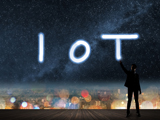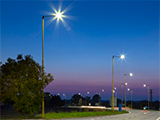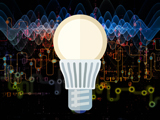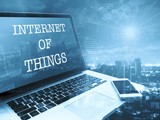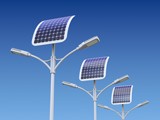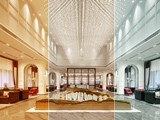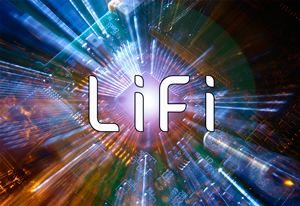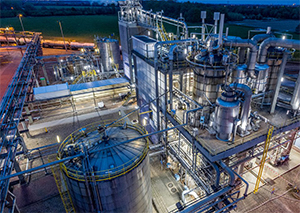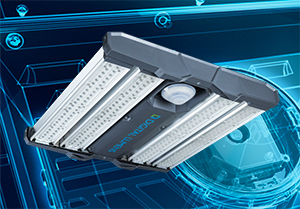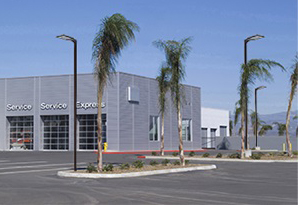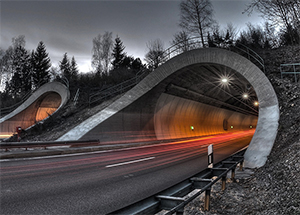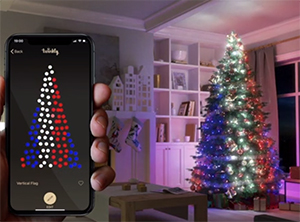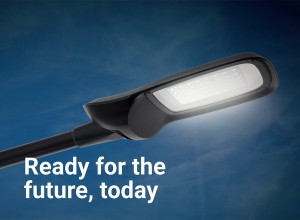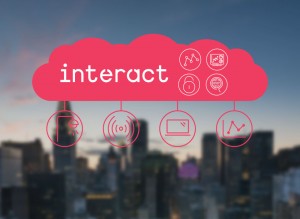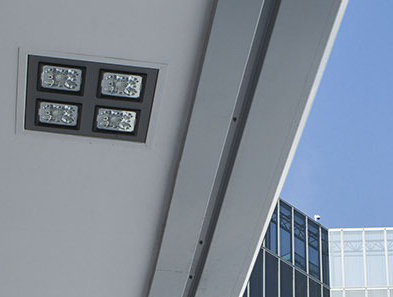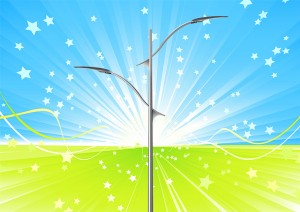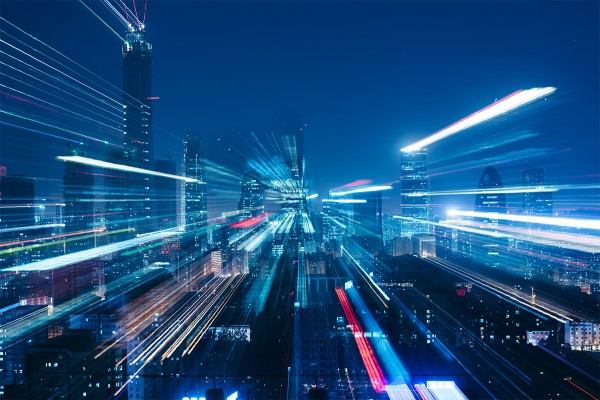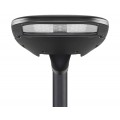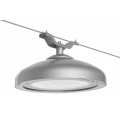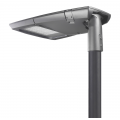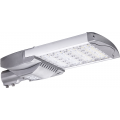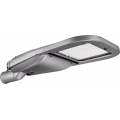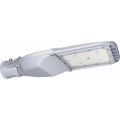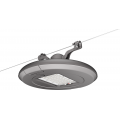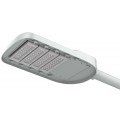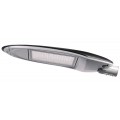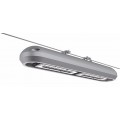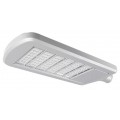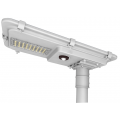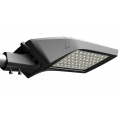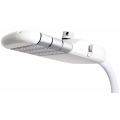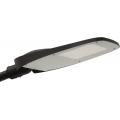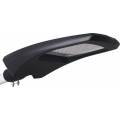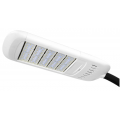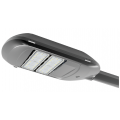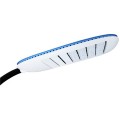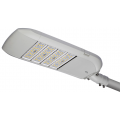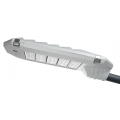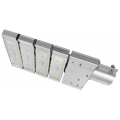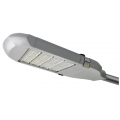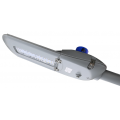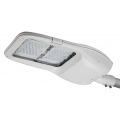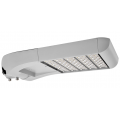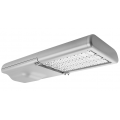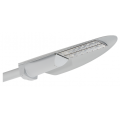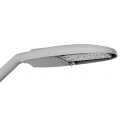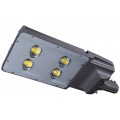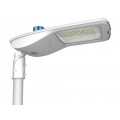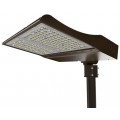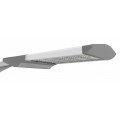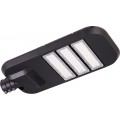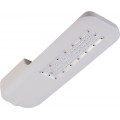
Digital Light Source for Smart Lighting
The public lighting sector is on the verge of a major transformation driven by the radical energy efficiency improvement achieved by mass deployment of LED lighting. An LED is a semiconductor diode impregnated or doped with GaN layers to create a PN junction and emits electromagnetic radiation in the form of visible light when the PN junction is forward-biased. LED lighting technology offers the promise of energy conversion efficiency and high quality spectral output with good color rendering ability. The light generation process is delivered in solid state materials, a block of semiconductor, offering LEDs remarkable reliability and stability that contribute to the long lumen maintenance life of LED street lighting fixtures. The semiconductor lighting technology kicked off a new era of advanced digital lighting applications. By nature, solid state light sources have excellent compatibility with electronic logic circuits and associated control elements. The exceptional digital connectivity and flexible system integration capabilities have facilitated more sophisticated lighting control algorithms and increased networking possibilities. Intelligent street lighting provides a translation of the digital characteristics of LED lighting technology into a ubiquitous implementation of smart city initiatives.
The Critical Infrastructure Components of Smart and Sustainable Cities
Public lighting systems are known wherein a plurality of roadway, street and area lighting systems are installed to facilitate traffic flow and assure pedestrians' safety. The vast deployment of roadway luminaires forms an extensive and highly penetrative physical network citywide, which establishes a prospective prototype infrastructure for myriad of networking applications. The energy-intensive public lighting systems drove the use of demand-oriented control and monitoring circuits. Street lights are the earliest lighting systems that were equipped with light-sensitive photocells to automatically adjust light levels or turning on/off the multiple lights. Occupancy sensors and passive infrared (PIR) sensors were employed to detect the presence or absence of people in a space for simple on/off switching of individual lights. Adaptive and transition lighting system provide a central control for street lamps, which may be grouped in one or more zones. Such light control systems consist of microcontrollers, dimming circuitry, timing devices, sensors, transceiver, digital inputs, and analog inputs. The initial application of lighting control technology for energy efficiency improvement subconsciously made a step toward intelligent lighting. In addition, street light poles are the ideal carriers for attachment of peripheral devices designed for lighting control. As wireless networks and internet access becomes increasingly commonplace, LED street lighting with network connectivity is poised to play a major role in smart city infrastructures.
Intelligent Street Lighting
Moving to digital control opens up a new horizon of automation to street lighting systems. However, the real revolution arrives when intelligence is included in LED street lighting systems through the use of networked control performed via a multiplicity of control modules, making it truly smart. An intelligent street lighting system is a lighting system with intelligent control and remote communication features. The networked lighting system provides monitoring, measuring and control via wired or wireless communications between the central control system, the communication modules and the street lights. The integration of intelligence into LED street lighting applications enables many intelligent features by means of a bi-directional data exchange.
Smart lighting provides remote adaptive lighting control by identifying opportunities for improved power usage and optimizing operational efficiency dynamically through the sensors and microcontrollers based on the weather conditions, traffic density, and even naturalistic features.
Predictive diagnostics can be put into place by alerting abnormal conditions, checking functional defects, locating the malfunctioning lamps, and scheduling preventive maintenance. The predictive monitoring significantly cut down lighting maintenance costs and simplifies asset management.
Smart street lighting systems provide intelligent interfaces to connect, communicate and interact within social, environment and user contexts, which is the core theory of Internet of Things (IoT).
Street Lighting Meets the Internet of Things (IoT)
The Internet of Things (IoT) is a network of uniquely identifiable physical objects (things) which are internetworked to achieve control and information exchange via an information carrier based on standard communication protocols. IoT allows a wide variety of devices to create seamless communication and contextual interactions remotely across the existing network infrastructure. IoT enables all physical objects to act as uniquely addressable nodes and adds network functions to enhance and extend their main functionality. This feature introduces tremendous new capabilities and create a number of opportunities by providing controllable and even personalized interoperability and manageability in today's Smart City and Smart Energy Management Systems.
Adding IoT connectivity to street lights quantifies the benefits of sustainability development. The combination of network communicating, intelligent sensing, and sophisticated data analysis capabilities allow municipal authorities to monitor and dynamically control the street lighting systems. The IoT based lighting technology resolves the scalability challenges to manage a large number of streetlight facilities by aggregating and act on large amounts of data generated by IoT street lights to improve urban lighting services, maximize energy savings and reduce operation costs. As such, IoT networking technology creates a practical opportunity for more direct integration of LED street lighting into computer-based systems
The Internet of Things goes beyond powerful machine-to-machine (M2M) communications in street lighting management. A large number of applications can be put into practice within a broader context of the extensive development of smart city initiatives across the world. Smart street lighting systems can be implemented as a critical component in the smart city infrastructures and provide extended capabilities such as public safety monitoring, traffic management, weather monitoring, environmental protection, smart parking, WiFi accessing, Utility metering and leakage sensing, and voice broadcasting, etc.
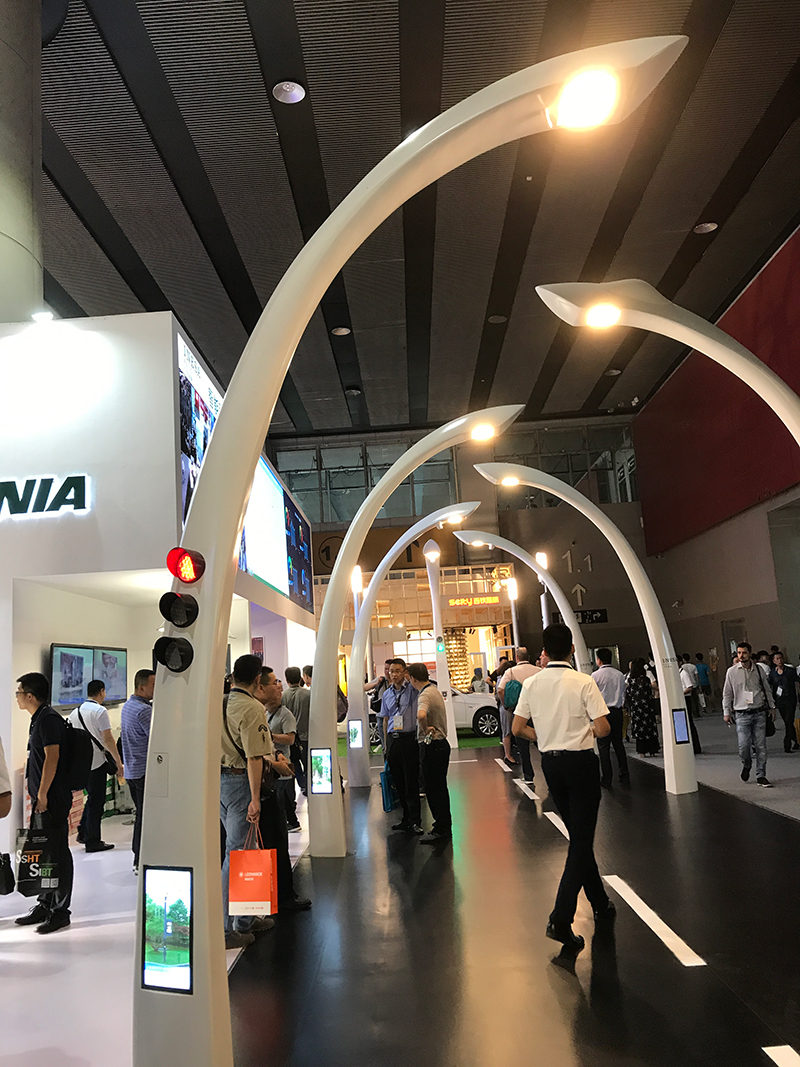
Architecture for the Internet of Things Street Lighting
The IoT based street lighting can be defined as internetworked digital lighting systems that utilize individual lights to as network node assemblies to receive, collect and transmit data. The IoT consists of three-layer hierarchical model. The lower layer is composed by end nodes installed on street lights to perform sensing and measurements. The second layer of the hierarchy provides connectivity to both remote servers of control systems and the end nodes. The highest level of the hierarchy is the application layer that consists of the remote control system or server, whose tasks include optimizing management and efficiency of street lighting systems and perform other applicable strategies.
Many different nodes may be employed depending on the lighting system features to facilitate the monitoring and control of the street light performance and other IoT features. Such network nodes include light dependent resistors (LDRs), passive infrared (PIR) sensors, current sensors, hall effect sensors, and relays. An LDR or a photo resistor is an input transducer that converts brightness (light) to resistance. Light dependent resistors operate on the principle of photo conductivity to adjust the brightness of a street light in different weather conditions. PIR sensors are used to detect the density or flow of traffic by defining the infrared wavelengths enters through the front of the sensor. A realtime clock circuit is installed to provide time and day information. A temperature sensor records local system temperature. A current sensor is used to detect and convert electric current (AC or DC) to a measurable output voltage. Relays are remote control switches for on/off activation.
The analog data collected by the network nodes is converted in digital form, processed by second layer of IoT architecture, which is typically a microcontroller that can be an embedded processor with associated circuitry, application specific integrated circuits (ASICs), or field-programmable gate arrays (FPGAs). LED drivers often interface to intelligent microcontrollers to execute allocated instructions such as adaptive dimming control. The microcontroller is further interfaced with communications modules serving as gateways to provide connectivity between the remote control system, the communication modules and the street lights.
IoT Street Lighting Network Communication
IoT streetlight systems use a combination of long-, medium- and short-range networks communication technologies. There are three types of communication systems available for implementing network connectivity in an intelligent streetlight system: 1) Power line communications (PLC) that modulate communication signals over existing power distribution networks, 2) Broadband power line (BPL) network in which the data signals are modulated onto carriers in the megahertz range and higher, 3) Wireless communication implemented with the utilization of radio frequency modules.
Wireless technology plays a critical role in the implementation of IoT networked intelligent street lighting systems. Since there's a tremendous cost in cabling a vast number of sensors, wireless communication is the sole solution to the deployment of flexible sensor networks over wide or inaccessible areas. In the concept of IoT, low-power standard communication is preferred for interconnection among many smart devices. Wireless mesh networking are becoming increasingly popular for IoT infrastructure application to connect devices to each other, and to cloud-based services. ZigBee is a robust wireless mesh networking standard based on the IEEE 802.1 5.4 standard for wireless personal area networks (WPANs). ZigBee specifies high level communication protocols and provides high reliability and larger range with mesh networking. ZigBee implementation requires additional equipment such as a coordinator, router and ZigBee end-devices.
Other IoT-related wireless technologies include Wi-Fi, 6LoWPAN (an LWPAN standard specified to adapt IPv6 communication), Z-Wave, Bluetooth Low Energy, Wireless Sensor Networks (WSNs), Dash7 (a WSNs protocol for kilometer-distance range communication operating 433 MHz which means better penetration through walls than 2.4 GHz), Radio-Frequency Identification (RFID), and Near Field Communication (NFC), etc.












